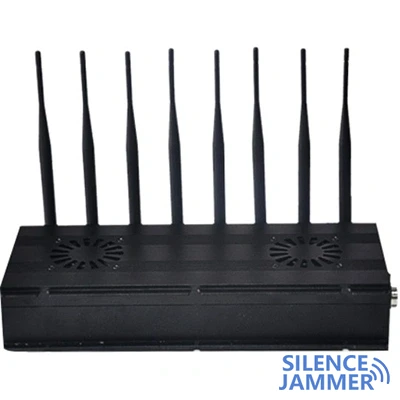In certain specific occasions, such as examination rooms, conference rooms, prisons, etc., cellular jammers can effectively block mobile phone signals and prevent information leakage and illegal communications. Many people are concerned about a question: Can the range of a cellular jammer be adjusted? The answer is yes. This article will discuss in detail the importance of range adjustment and technical implementation methods of cellular jammers.
Different application scenarios have different requirements for the range of cellular jammers. For example, in an examination room, the shielding range may need to cover the entire examination room and its surrounding areas, while in a conference room, it may only need to cover one room. If the range is not adjustable, the shielding range may be too large or too small, affecting the use effect.
Avoid interference with legal communications
In some occasions, an excessively large shielding range may interfere with legal communications in neighboring areas. For example, if a cellular jammer is used in an office in a city, if the range is too large, it may affect the normal communication of the next office or floor. Therefore, it is very important to adjust the range to avoid unnecessary interference.
Energy saving and equipment protection
Adjusting the range can also help save power and protect equipment. The greater the range, the higher the power the device needs to transmit, which not only increases energy consumption, but may also accelerate the wear of the device. By adjusting the range, energy consumption and equipment loss can be reduced while meeting the needs.

Technical implementation methods
The range adjustment of the cell phone jammer is mainly achieved through the following technical means:
Adjusting the transmission power
The range of the jammer mainly depends on its transmission power. By adjusting the output power of the device, the coverage range of the interference signal can be changed. The higher the power, the larger the signal coverage range; conversely, the lower the power, the smaller the coverage range.
- Antenna design
- Frequency band selection
The design and type of the antenna will also affect the range of the jammer. Different types of antennas have different radiation characteristics. By selecting and adjusting the antenna, the propagation direction and coverage range of the signal can be controlled. For example, an omnidirectional antenna can cover a 360-degree range, while a directional antenna can focus the signal in a specific direction.
The frequency band selection of the shielding signal will also affect the range. Signals of different frequency bands have different propagation characteristics in the air, and low-frequency band signals usually propagate farther. By selecting and adjusting the frequency band of the shielding signal, the range can be controlled.
The range of the cellular jammer can be adjusted, which is of great significance for meeting the needs of different application scenarios, avoiding interference with legitimate communications, and energy saving and equipment protection. By adjusting the transmission power and selecting the appropriate antenna and frequency band, effective control of the shielding range can be achieved. In the future, with the continuous advancement of technology, the range adjustment of the cellular jammer will be more accurate and convenient, providing more flexible and efficient solutions for various application scenarios.



